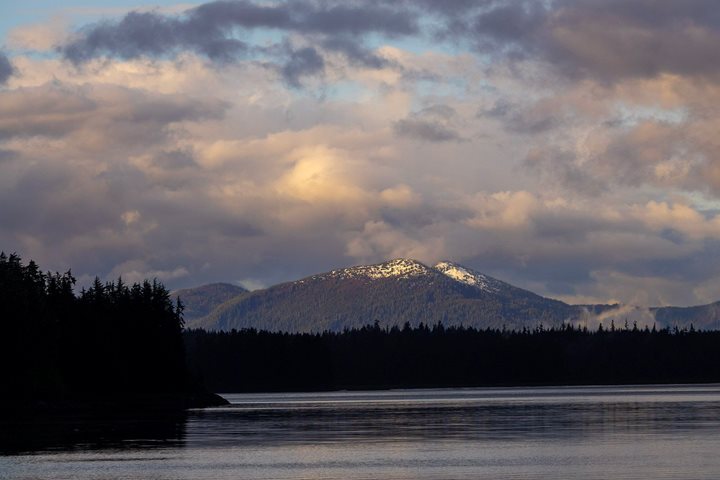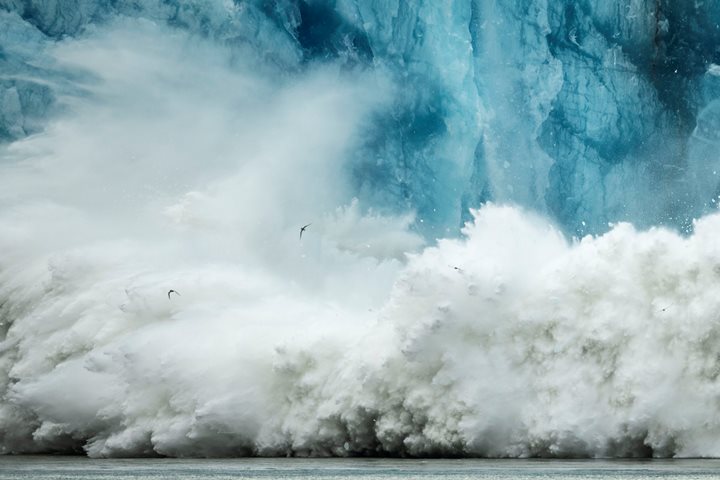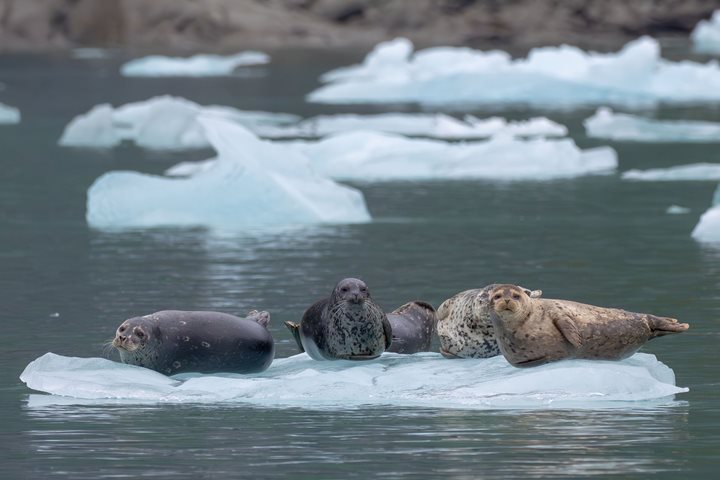For our last full day of exploration in the wilderness of Southeast Alaska, we sailed through the landscape of Tracy Arm-Fords Terror Wilderness. This glacially-carved fjord showcases Alaska at its most dramatic, combining nearly all of the natural history we have seen throughout the trip so far. Our morning began at the mouth of the fjord, the historic extent of the glacier at its largest before it began to recede. National Geographic Sea Bird didn’t make it far beyond this sandbar before the natural history team spotted a pod of killer whales slowly cruising through the milky waters. We watched as the group surfaced in silence along the steep granite cliffs and the old growth forest that fills the valley. We then continued towards the face of South Sawyer Glacier where we anchored, dropped Zodiacs, and cruised among the humbling icebergs that are calved by the glacier into the warm ocean water. Along the way, we encountered gulls, terns, hundreds of hauled out harbor seals, and mountain goats that find refuge in the rock faces around the glacier face. Altogether, it made for a beautiful end to our Alaska experience.
- Daily Expedition Reports
- 22 Jun 2022
Tracy Arm-Fords Terror Wilderness, 6/22/2022, National Geographic Sea Bird
- Aboard the National Geographic Sea Bird
- Alaska
Alex Krowiak, Naturalist/Certified Photo Instructor
A childhood surrounded by the woods and streams of Pennsylvania initially sparked Alex’s curiosity about nature. That curiosity eventually led him to pursue degrees in biology and environmental studies at Boston College. During his time there he cond...
Read MoreShare Report
Alaska Escape: LeConte Bay, Wrangell and Misty Fjords
VIEW ITINERARYRelated Reports
5/29/2025
Read
National Geographic Sea Bird
Endicott Arm
Dawes Glacier, located at the head of Endicott Arm in Southeast Alaska, is an active tidewater glacier in the remote Tracy Arm-Fords Terror Wilderness Area. Reaching the glacier requires a 30-mile journey through a narrow fjord lined with sheer rock walls rising over 3,000 feet. These cliffs are veined with waterfalls and often blanketed in mist. Throughout the fjord, remnants of the glacier float in the form of icebergs. The glacier feeds cold, silty meltwater into the fjord, giving the water a distinctive milky-green hue and supporting a rich marine food web. Harbor seals were hauled out on ice floes near the glacier. Gulls and Arctic terns were actively feeding, likely drawn by the small fish and plankton concentrated by the glacial outflow. The glacier calved several times, hurling large chunks of ice across the water’s surface, sending the birds fleeing. The sound of the ice hitting the water echoed off the steep rock walls that rise thousands of feet on either side.
5/27/2025
Read
National Geographic Sea Bird
Dawes Glacier in Endicott Arm
We could not have asked for a better way to end the expedition. Our last day was amazing! Visiting Dawes Glacier in Endicott Arm was a highlight with its crystal-blue ice and resting harbor seals floating by on the ice. In the evening, we even got to see a couple of humpback whales off the bow of the ship. We ended the day by watching images of the beautiful moments created on our expedition during the famed guest photo slideshow.







